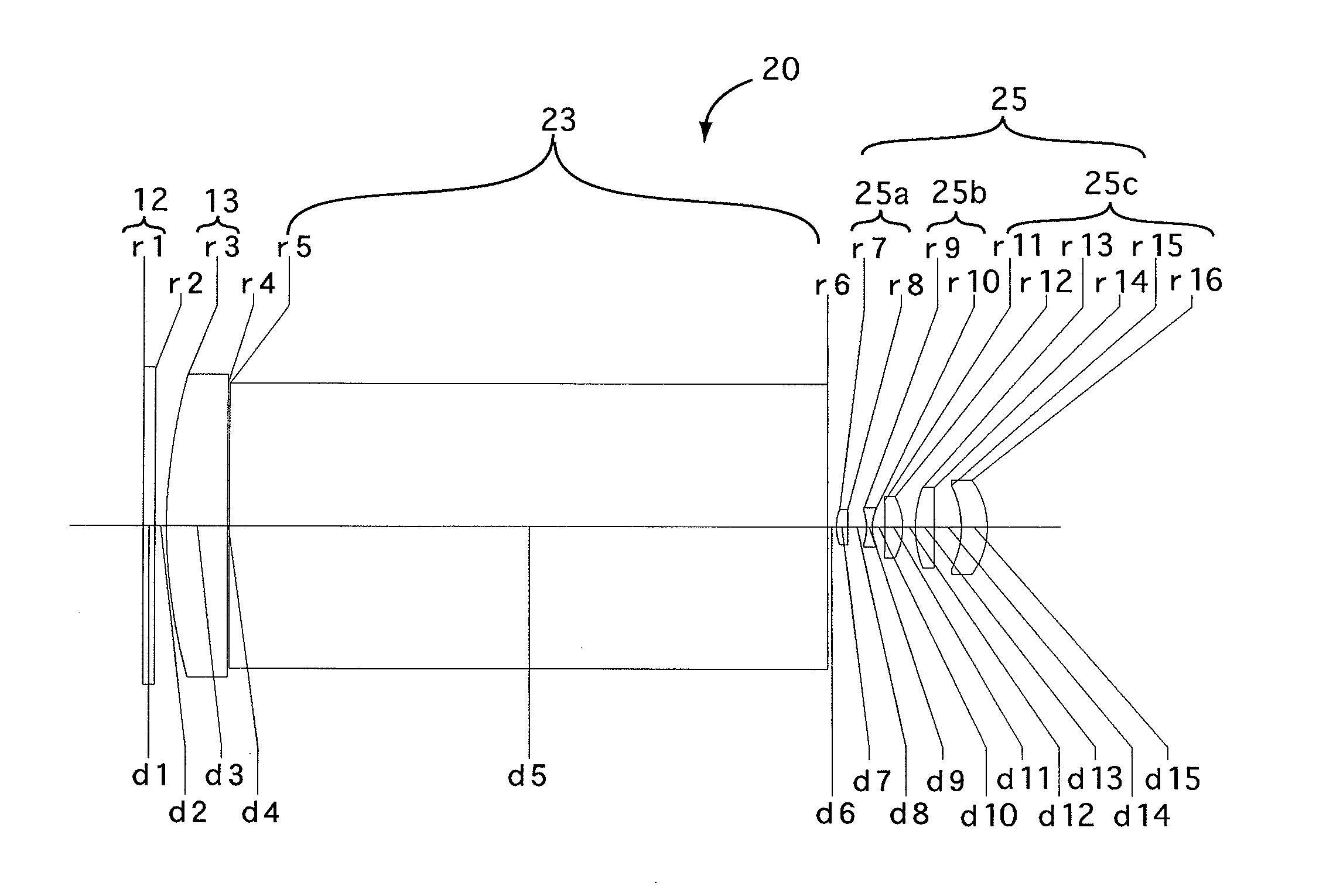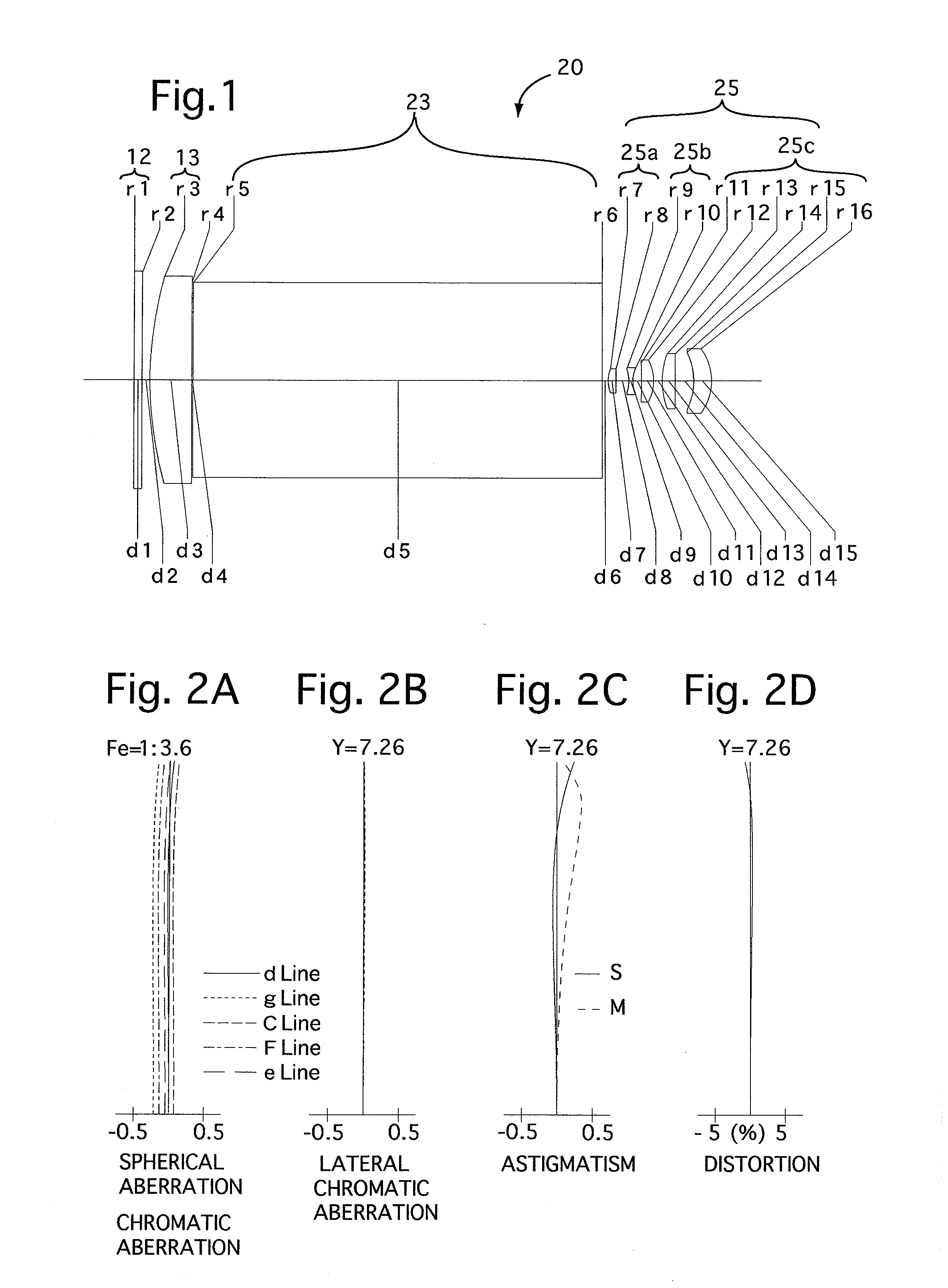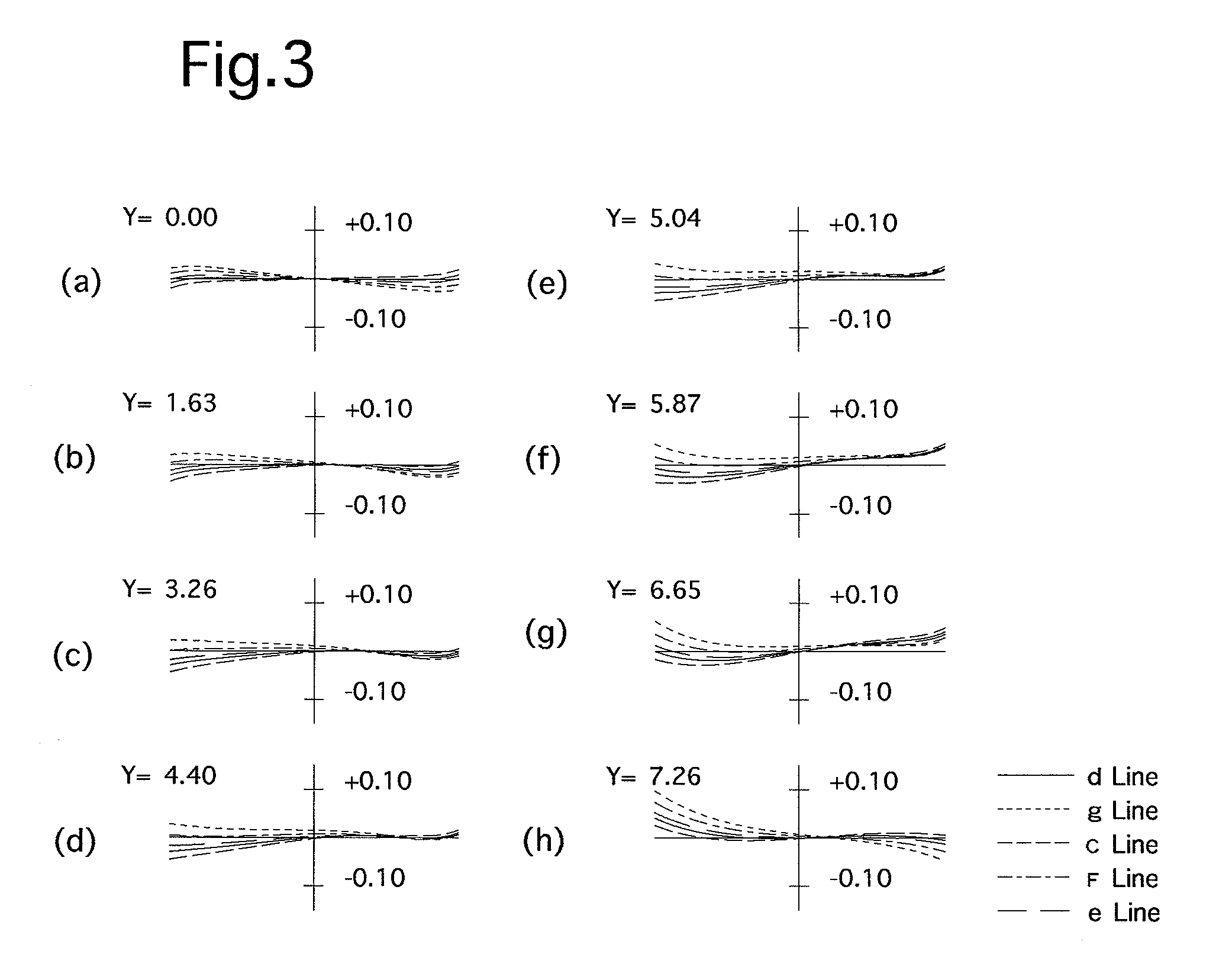Relay finder optical system of an single-lens reflex camera
a single-lens reflex and optical system technology, applied in the field of single-lens reflex optical system of relay finder optical system, can solve the problems of large diameter complicated structure of lupe (magnifying) optical system, and shorter reli
- Summary
- Abstract
- Description
- Claims
- Application Information
AI Technical Summary
Benefits of technology
Problems solved by technology
Method used
Image
Examples
embodiment 1
[0080]FIG. 1 is the lens arrangement of the relay finder optical system according to the first embodiment of the present invention. FIGS. 2A through 2D show aberrations occurred in the lens arrangement shown in FIG. 1. FIGS. 3A through 3H show transverse aberrations (coma) occurred in the lens arrangement shown in FIG. 1.
[0081]Table 1 shows the numerical data of the first embodiment.
[0082]Furthermore, surface No. 1 designates the primary imaging plane 12.
TABLE 1Fe = 1:3.6f = 34.25M = −0.27fB = 5.00Surf. No.rdNdν2∞2.00—— 3*90.00010.501.4917657.44∞0.30——5∞102.081.5163364.16∞1.50——78.0641.901.7725049.688898.4163.20——9−9.1001.001.6989530.110 8.4212.14——11 −104.2223.001.7725049.612 −10.8012.17——13 19.6753.201.6935053.214 526.2814.68——15 −15.6114.501.7725049.616 −13.119———The symbol * designates the aspherical surface which is rotationally symmetrical with respect to the optical axis.
[0083]Aspherical surface data (the aspherical surface coefficients not indicated are zero (0.00)):
Surf. No...
embodiment 2
[0084]FIG. 4 is the lens arrangement of the relay finder optical system according to the second embodiment of the present invention. FIGS. 5A through 5D show aberrations occurred in the lens arrangement shown in FIG. 4. FIGS. 6A through 6H show transverse aberrations (coma) occurred in the lens arrangement shown in FIG. 4.
[0085]Table 2 shows the numerical data of the second embodiment.
[0086]Furthermore, surface No. 1 designates the primary imaging plane 12.
TABLE 2Fe = 1:4.0f = 35.39M = −0.31fB = 4.9Surf. No.rdNdν1∞2.001.4917657.42∞2.00—— 3*90.00010.501.4917657.44∞0.30——5∞102.081.5163364.16∞1.50——79.0831.901.7725049.6877.0634.27——9−10.4111.001.6668033.010 9.7982.30——11 −90.6803.001.7725049.612 −12.7430.50——13 14.6374.201.6935053.214 32.8628.03——15 −94.9994.501.7725049.616 −33.424———The symbol * designates the aspherical surface which is rotationally symmetrical with respect to the optical axis.
[0087]Aspherical surface data (the aspherical surface coefficients not indicated are zero (...
embodiment 3
[0088]FIG. 7 is the lens arrangement of the relay finder optical system according to the third embodiment of the present invention. FIGS. 8A through 8D show aberrations occurred in the lens arrangement shown in FIG. 7. FIGS. 9A through 9H show transverse aberrations (coma) occurred in the lens arrangement shown in FIG. 9.
[0089]Table 3 shows the numerical data of the third embodiment.
[0090]Furthermore, surface No. 1 designates the primary imaging plane 12.
TABLE 3Fe = 1:3.2f = 30.48M = −0.25fB = 5.10Surf. No.rdNdν1∞2.0001.4917657.42∞2.000—— 3*90.00010.5001.4917657.44∞0.300——5∞102.0801.5163364.16∞1.500——710.4621.9001.7725049.68−128.3272.580——9−12.3931.0001.6889331.110 11.7522.300——11 −36.5093.0001.7725049.612 −11.9950.500——13 24.3864.2001.7410052.714 −107.3587.490——15 −37.5384.5001.7725049.616 −23.830———The symbol * designates the aspherical surface which is rotationally symmetrical with respect to the optical axis.
[0091]Aspherical surface data (the aspherical surface coefficients not ...
PUM
 Login to View More
Login to View More Abstract
Description
Claims
Application Information
 Login to View More
Login to View More - R&D
- Intellectual Property
- Life Sciences
- Materials
- Tech Scout
- Unparalleled Data Quality
- Higher Quality Content
- 60% Fewer Hallucinations
Browse by: Latest US Patents, China's latest patents, Technical Efficacy Thesaurus, Application Domain, Technology Topic, Popular Technical Reports.
© 2025 PatSnap. All rights reserved.Legal|Privacy policy|Modern Slavery Act Transparency Statement|Sitemap|About US| Contact US: help@patsnap.com



